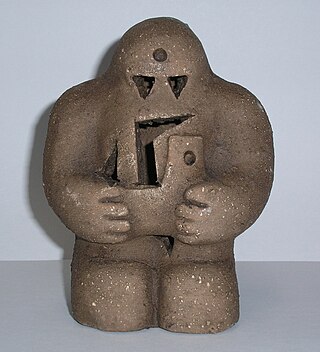
A golem is an animated, anthropomorphic being in Jewish folklore, which is entirely created from inanimate matter, usually clay or mud. The most famous golem narrative involves Judah Loew ben Bezalel, the late 16th-century rabbi of Prague. According to Moment magazine, "the golem is a highly mutable metaphor with seemingly limitless symbolism. It can be a victim or villain, man or woman—or sometimes both. Over the centuries, it has been used to connote war, community, isolation, hope, and despair."

Lilith, also spelt Lilit, Lilitu, or Lilis, is a female figure in Mesopotamian and Jewish mythology, theorized to be the first wife of Adam and supposedly the primordial she-demon. Lilith is cited as having been "banished" from the Garden of Eden for not complying with and obeying Adam.

A succubus is a demon or supernatural entity in folklore, in female form, that appears in dreams to seduce men, usually through sexual activity. According to religious tradition, a succubus needs semen to survive; repeated sexual activity with a succubus will result in a bond being formed between the succubus and the man; and a succubus cannot drain or harm the man with whom she is having intercourse. In modern representations, a succubus is often depicted as a beautiful seductress or enchantress, rather than as demonic or frightening. The male counterpart to the succubus is the incubus.
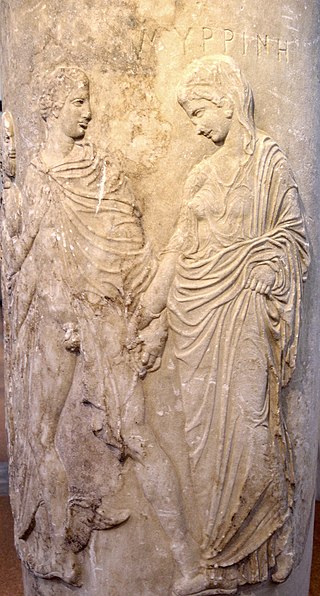
Psychopomps are creatures, spirits, angels, demons, or deities in many religions whose responsibility is to escort newly deceased souls from Earth to the afterlife.
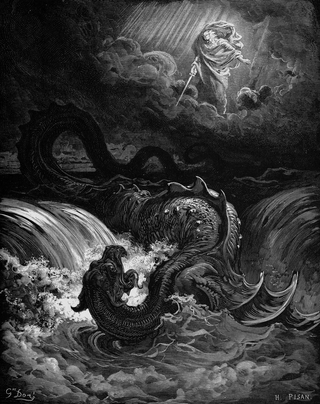
The Leviathan is a sea serpent noted in theology and mythology. It is referenced in several books of the Hebrew Bible, including Psalms, the Book of Job, the Book of Isaiah, and the pseudepigraphical Book of Enoch. The Leviathan is often an embodiment of chaos and threatening to eat the damned after their life. In the end, it is annihilated. Christian theologians identified Leviathan with the demon of the deadly sin envy. According to Ophite diagrams, the Leviathan encapsulates the space of the material world.

A cherub is one of the unearthly beings who directly attend to God, according to Abrahamic religions. The numerous depictions of cherubim assign to them many different roles, such as protecting the entrance of the Garden of Eden.

Asmodeus or Ashmedai is a king of demons in the legends of Solomon and constructing Solomon's Temple.

Frankenstein's monster or Frankenstein's creature, commonly but erroneously known as Frankenstein, is a fictional character who first appeared in Mary Shelley's 1818 novel Frankenstein; or, The Modern Prometheus as the main antagonist. Shelley's title thus compares the monster's creator, Victor Frankenstein, to the mythological character Prometheus, who fashioned humans out of clay and gave them fire.

The living creatures, living beings, or hayyot are a class of heavenly beings in Jewish mythology. They are described in the prophet Ezekiel's vision of the heavenly chariot in the first and tenth chapters of the Book of Ezekiel. References to the sacred creatures recur in texts of Second Temple Judaism, in rabbinical merkabah ("chariot") literature, in the Book of Revelation in the Christian New Testament, and in the Zohar.

Merkabah or Merkavahmysticism is a school of early Jewish mysticism, c. 100 BCE – 1000 CE, centered on visions such as those found in Ezekiel 1 or in the hekhalot literature, concerning stories of ascents to the heavenly palaces and the Throne of God.
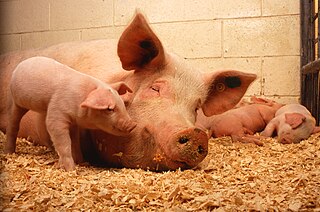
In some religions, an unclean animal is an animal whose consumption or handling is taboo. According to these religions, persons who handle such animals may need to ritually purify themselves to get rid of their uncleanliness.
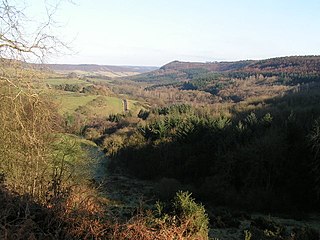
Broxa-cum-Troutsdale is a civil parish in the Scarborough district of North Yorkshire, England. The population as of the 2011 census remained less than 100. Details are included in the civil parish of Hackness. The parish includes the village of Broxa, and covers part of Troutsdale.
The Great Commandment is a name used in the New Testament to describe the first of two commandments cited by Jesus in Matthew 22:35–40, Mark 12:28–34, and in answer to him in Luke 10:27a:
... and one of them, a lawyer, asked him a question to test him. "Teacher, which commandment in the law is the greatest?" He [Jesus] said to him, "'You shall love the Lord your God with all your heart, and with all your soul, and with all your mind.' This is the greatest and first commandment. And the second is like it: 'You shall love your neighbor as yourself.' On these two commandments hang all the law and the prophets."

The lich is an undead creature found in the Dungeons & Dragons (D&D) fantasy role-playing game. Liches are spellcasters who seek to defy death by magical means.

Broxa is a village in the Scarborough district of North Yorkshire, England, within the North York Moors National Park. The village is 6.2 miles (10 km) west of Scarborough, at an elevation of 531 feet (162 m). The River Derwent is 1,600 feet (500 m) west of the village.
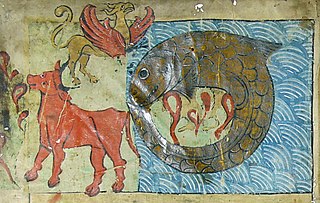
Behemoth is a beast from the biblical Book of Job, and is a form of the primeval chaos-monster created by God at the beginning of creation; he is paired with the other chaos-monster, Leviathan, and according to later Jewish tradition both would become food for the righteous at the end-time. Metaphorically, the name has come to be used for any extremely large or powerful entity.
Rosh Hashanah L'Ma'sar Behemah or Rosh Hashanah LaBehemah is one of the four New Year's day festivals in the Jewish calendar as indicated in the Mishnah. During the time of the Temple, this was a day on which shepherds determined which of their mature animals were to be tithed. The day coincides with Rosh Chodesh Elul, the New Moon for the month of Elul, exactly one month before Rosh Hashanah.
Valley of the ants is a medieval Jewish legend about Solomon that is retold in the Jewish Encyclopedia and in Quran 27:18-19.












